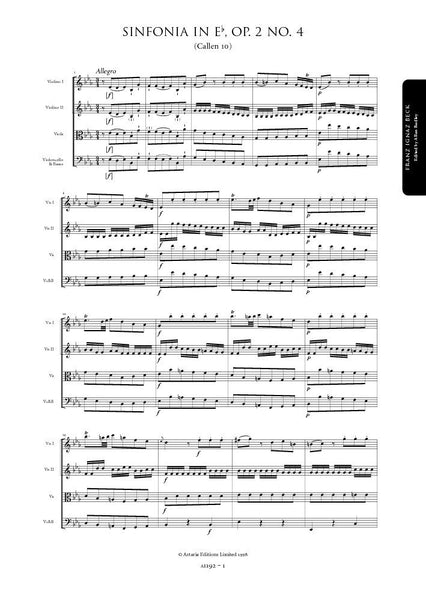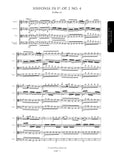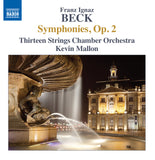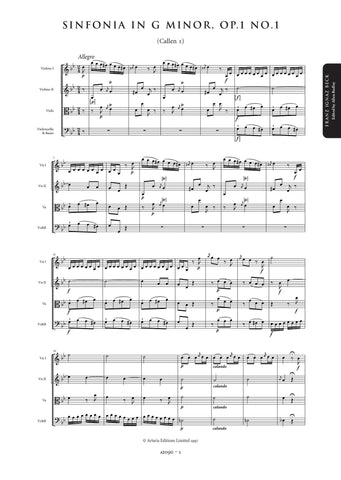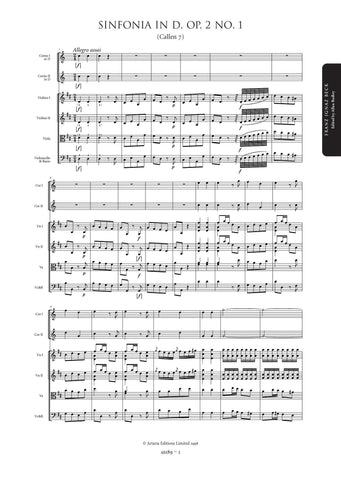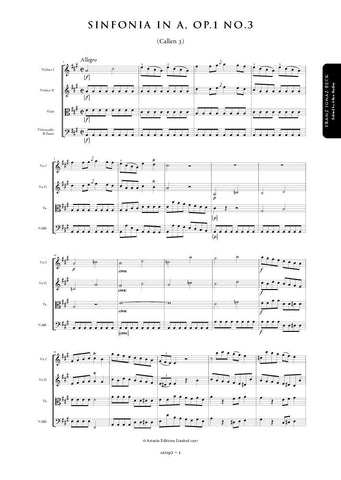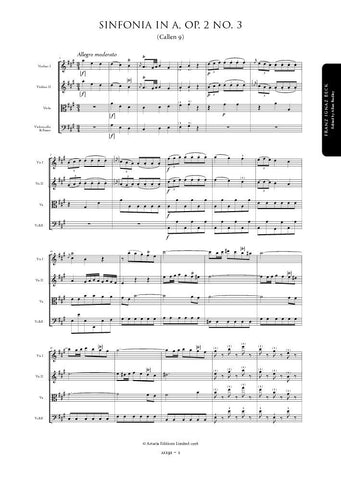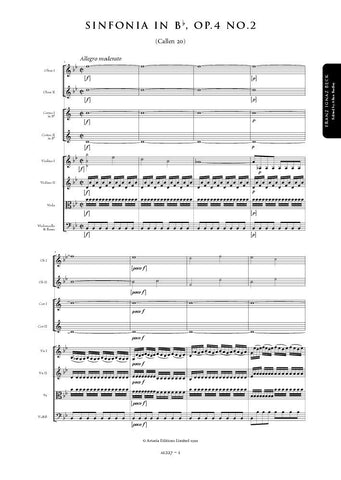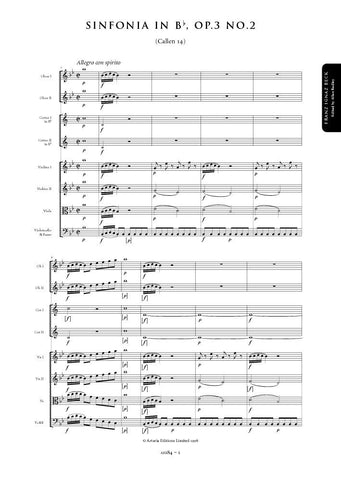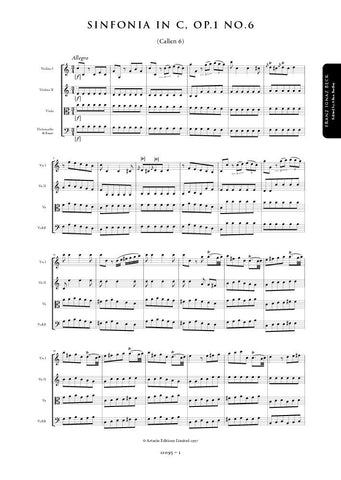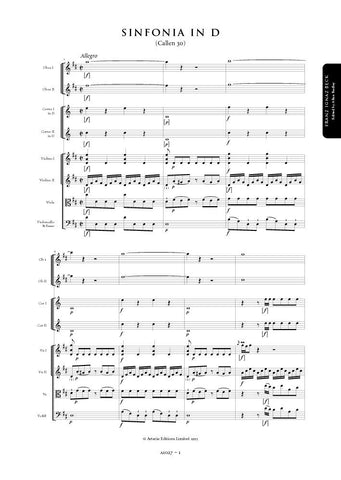Description |
Beck, Franz (1734-1809)
|
||||||||||||||||||
Audio sample |
|||||||||||||||||||
Details |
The six symphonies Op.2 were issued by the Parisian publisher La Chevardire in 1760. They were evidently popular and still considered current enough for Breitkopf to advertise copies for sale in his 1775 thematic catalogue. The title page of La Chevardire's edition reads:'SIX / SIMPHONIES / A QUATRE PARTIES / Et Cors de Chasses / ad Libitum / Ddie / A MONSIEUR RÜA / PAR FRANCESCO BEK / Dissipolo D'Stamitz... OPERA II...' As in the earlier Op.1 'overtures' Beck includes one minor-key work in the set also in G minor but adds a pair of horns in two symphonies (Op.2 No.1 and Op.2 No.5) to great effect. The string writing is again thrilling in the best Mannheim tradition but, as in the symphonies of Richter, there is a harmonic breadth and contrapuntal ingenuity which is absent from the works of many of his contemporaries. The stylistic unity of Beck's published symphonies seems to have encouraged the practice of interchanging movements. A copy of Op.2 No.1 (Callen 7), preserved in the University Library in Basel (ex Sarasin collection), includes a spurious timpani part and replaces the first and second movements of the work with those from Op.4 No.4 (Callen 22). In the same collection there is a mix-and-match pastiche of Op.2 No.2: the first and second movements are replaced by those of the G minor Overture Op.1 No.1 (Callen 1). The practice continued in our own century; Robert Sondheimer's edition of Op.2 No.5 (Berlin, 1927) substituted the first and third movements from Op.3 No.4 (Callen 16) and added a Minuet (from Callen 28). This edition is based on a copy of La Chevardire's print now preserved in the Bodleian Library, Oxford. The only major departure from the text is the omission of the basso continuo figuring on the grounds that it is more likely to be the work a publisher's assistant than the composer and is rendered largely superfluous by the publication of the work in full score. In the absence of both the autograph score and an authentic set of parts, the edition presents as faithfully as possible the intentions of the composer as transmitted in La Chevardire's print. The style and notation of articulation and dynamic markings have been standardised throughout, and, where missing, markings have been reconstructed from parallel passages. These are indicated by the use of dotted slurs or brackets where appropriate. Like most eighteenth-century sources, La Chevardire's print is inconsistent at times in its notation of appoggiature; these too have been standardised to minimise confusion. Obvious wrong notes have been corrected without comment; editorial emendations with no authority from the source are placed within brackets. Allan Badley |
Loading...
Error




